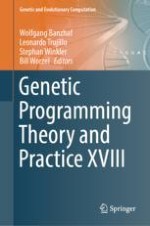2022 | OriginalPaper | Buchkapitel
11. Evolution of the Semiconductor Industry, and the Start of X Law
verfasst von : Andrew N. Sloss
Erschienen in: Genetic Programming Theory and Practice XVIII
Verlag: Springer Nature Singapore
Aktivieren Sie unsere intelligente Suche, um passende Fachinhalte oder Patente zu finden.
Wählen Sie Textabschnitte aus um mit Künstlicher Intelligenz passenden Patente zu finden. powered by
Markieren Sie Textabschnitte, um KI-gestützt weitere passende Inhalte zu finden. powered by
